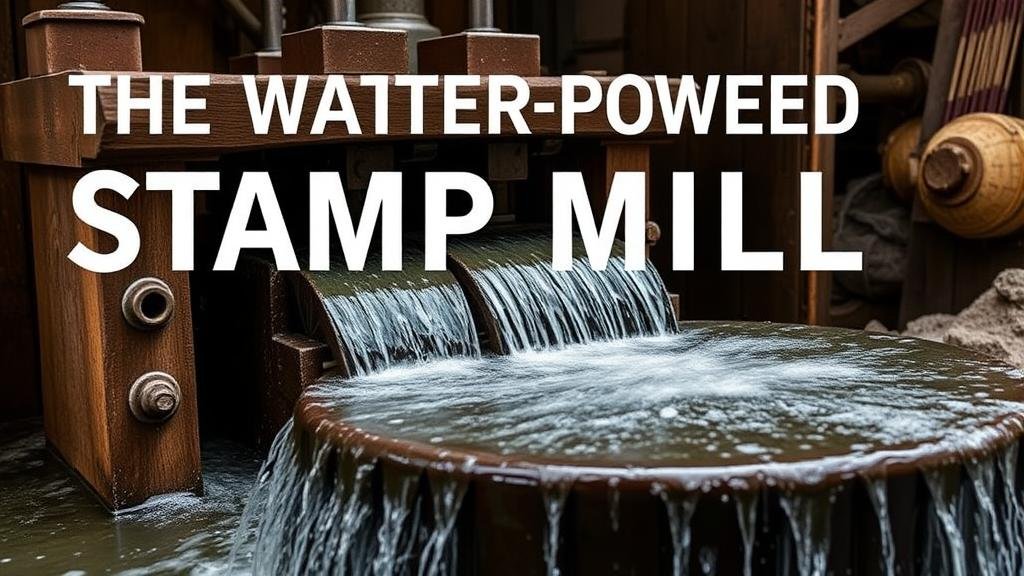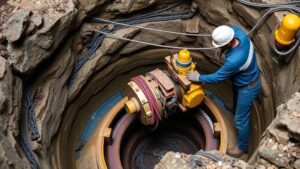The Water-Powered Stamp Mill: Techniques for Crushing Ore in De Re Metallica
The Water-Powered Stamp Mill: Techniques for Crushing Ore in De Re Metallica
The water-powered stamp mill represents a significant technological advancement in the history of mineral processing, particularly for crushing ore. First described by Georgius Agricola in his seminal work, De Re Metallica, published in 1556, this innovative device played a crucial role in the extraction of valuable metals from ores. This article explores the techniques employed in the water-powered stamp mill, its historical significance, and its impact on the mining industry.
The Functionality of the Water-Powered Stamp Mill
The primary function of a stamp mill is to crush hard materials such as rock to extract valuable minerals. water-powered mechanism typically utilizes a series of heavy wooden or metal stamps that are lifted and dropped onto the ore. The key processes involved in this system include:
- Crushing: The dropping of stamps breaks down the ore into smaller particles.
- Grinding: The material is further reduced in size through grinding with other particles and the mills grinding surface.
- Separation: Utilizing water, the lighter materials are washed away, allowing the heavier precious metals to be collected.
This combination of methods optimizes the extraction efficiency of contained metals, reflecting the advanced understanding of mineral processing at the time.
Historical Context and Development
The concept of a water-powered stamp mill is believed to have evolved from earlier hand-operated crushing methods. Agricolas De Re Metallica documented various techniques and innovations in mining that marked the transition from manual to mechanized processes.
By employing water as a source of energy, the stamp mill enabled miners to process ore on a larger scale than previously possible. For example, the implementation of stamp mills in regions such as the Erzgebirge (Ore Mountains) of Germany and the English West Country allowed for significant increases in metal recovery rates, reflecting the economic necessity of such technologies during the expanding European mining operations.
Advantages of Water-Powered Stamp Mills
The advantages of using water-powered stamp mills were manifold:
- Increased Output: The mechanization allowed for higher quantities of ore to be processed in a given timeframe.
- Consistency: The uniformity of the crushing process resulted in more consistent metal recovery.
- Cost Efficiency: By minimizing the reliance on human labor, operational costs decreased, improving profitability.
Such factors collectively contributed to the overall advancement of mining practices during the period.
Case Studies and Real-World Applications
Various case studies illustrate the practical applications of the water-powered stamp mill. One prominent example is the use of stamp mills in California during the Gold Rush era. As miners discovered gold in the Sierra Nevada, the installation of stamp mills along riverbanks allowed for the efficient processing of vast amounts of ore. Historical records indicate that a single stamp mill could yield hundreds of dollars worth of gold per day, making them a pivotal technology in the mining industrys growth.
Challenges and Limitations
Despite its numerous advantages, the water-powered stamp mill faced challenges:
- Dependency on Water: The effectiveness of this technology was heavily reliant on the availability of a reliable water source, limiting its geographical applicability.
- Labor Intensiveness: Although it reduced the burden on labor, initial setup and maintenance still required considerable manpower.
These challenges influenced the eventual transition to more modern forms of ore processing technologies in the late 19th and early 20th centuries.
Conclusion and Actionable Takeaways
The water-powered stamp mill played an essential role in the history of metallurgy and mining, effectively demonstrating the early optimization of machine-assisted ore processing. Understanding its operation and impact offers valuable insights into the evolution of mining practices and the technological innovations that shaped the industry.
In modern contexts, learning from these historical techniques can inspire ongoing innovations in sustainable and efficient mineral processing methods. Contemporary engineers and miners can look to successful features of the stamp mill to develop new technologies that respect both economic and environmental considerations.



